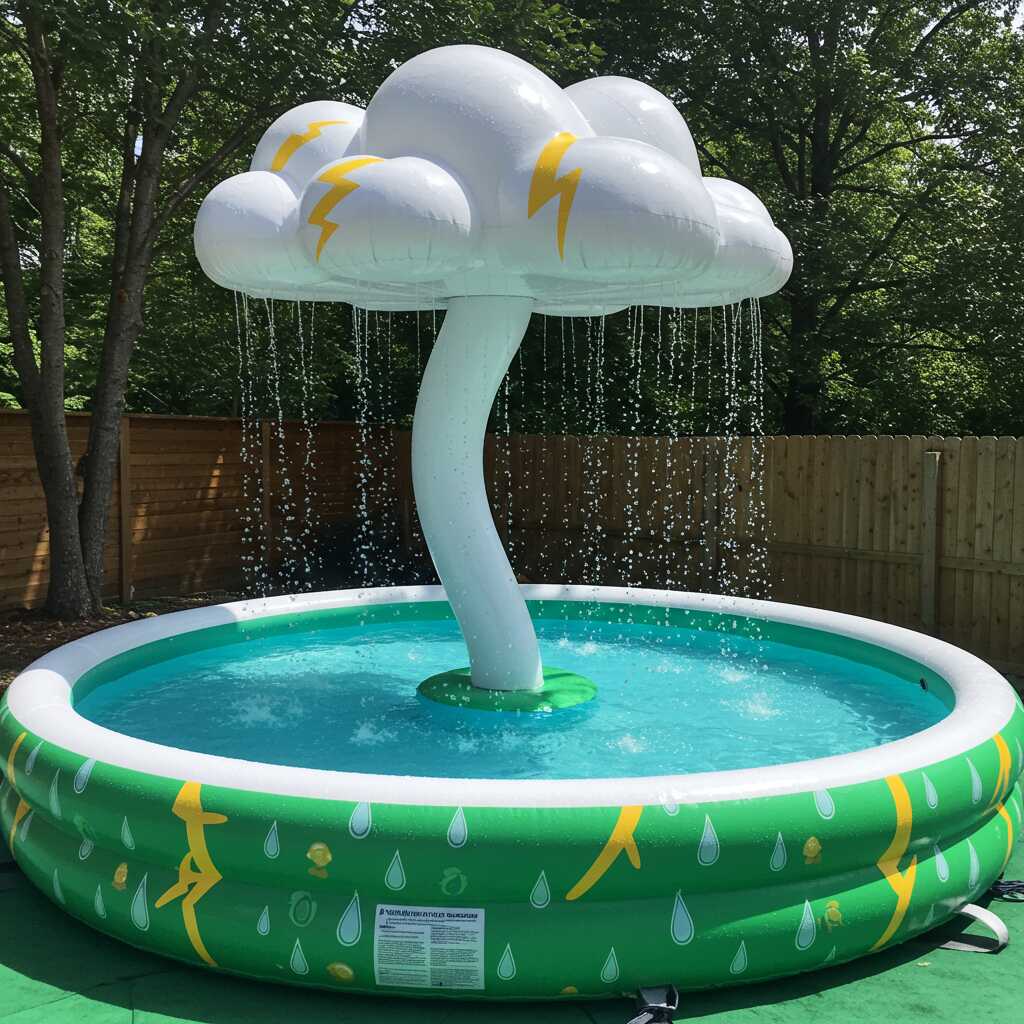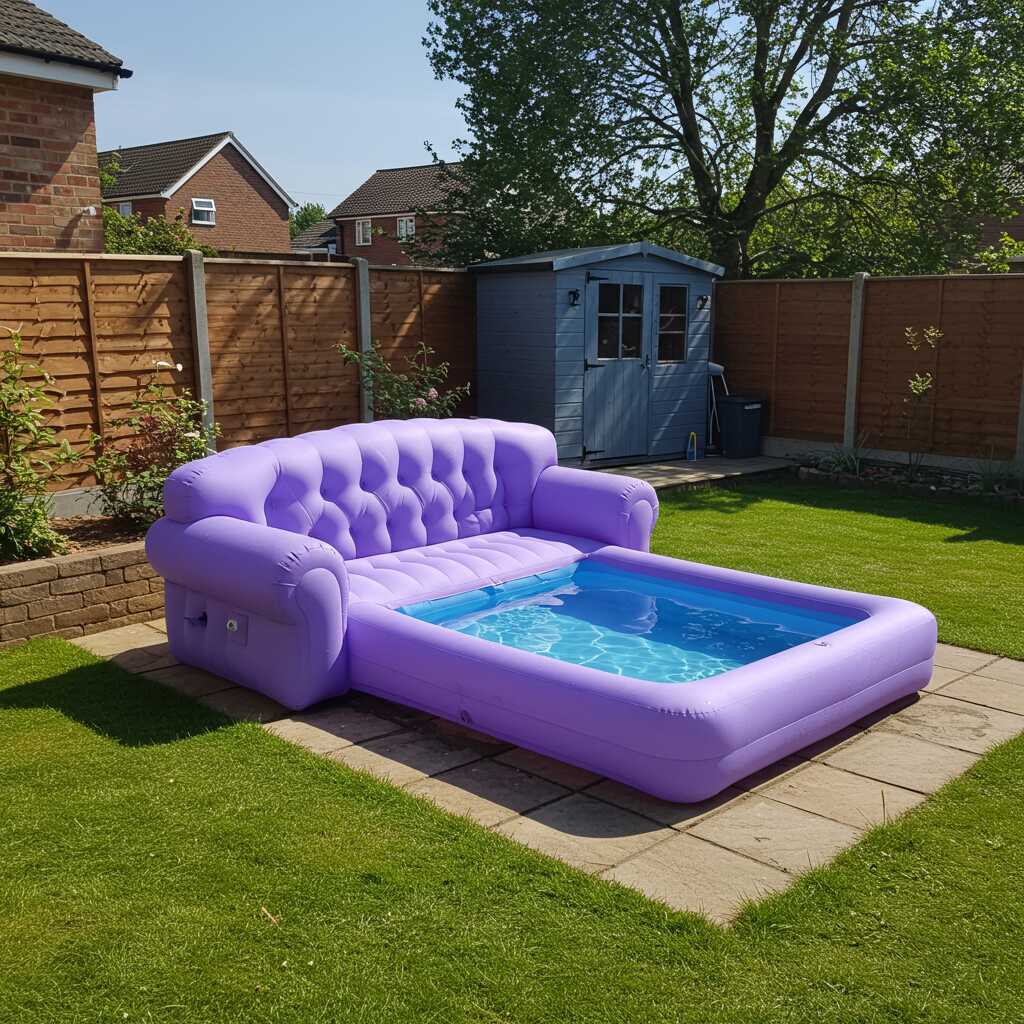In the ever-evolving landscape of modern living, where sustainability and leisure are increasingly intertwined, a groundbreaking innovation has emerged to redefine how we think about relaxation and environmental stewardship. Enter inflatable greenhouse pools , a revolutionary concept that marries the soothing allure of swimming with the practical functionality of greenhouses. These unique structures represent more than just a trend; they embody a shift in mindset, blending personal enjoyment with ecological responsibility. At first glance, the idea of combining a pool with a greenhouse may seem unconventional, yet it is precisely this fusion that makes inflatable greenhouse pools so compelling.
The versatility of inflatable greenhouse pools lies in their dual-purpose design. On one hand, they serve as inviting spaces for relaxation, offering a refreshing escape from the stresses of daily life. On the other hand, they harness the principles of greenhouse technology to create microclimates ideal for growing plants year-round. This innovative approach not only maximizes space but also enhances the user experience by integrating two seemingly disparate functions into a single cohesive unit. Whether you’re an avid gardener seeking to extend your growing season or someone looking to elevate your backyard oasis, inflatable greenhouse pools cater to a wide range of interests and lifestyles.
What sets these structures apart is their adaptability and ease of use. Unlike traditional greenhouses or pools, which often require extensive installation and maintenance, inflatable greenhouse pools are designed with convenience in mind. Their lightweight, portable construction allows for effortless setup and dismantling, making them suitable for both urban dwellers with limited outdoor space and rural homeowners with expansive backyards. Moreover, their inflatable nature ensures durability without compromising on aesthetics, creating an inviting environment that seamlessly blends form and function.
As we delve deeper into the world of inflatable greenhouse pools, it becomes clear that these structures are more than just a novelty—they are a testament to human ingenuity and our growing desire to live harmoniously with nature. By exploring their benefits, applications, and potential impact, we uncover a new paradigm of leisure that prioritizes both personal well-being and environmental sustainability. In the sections that follow, we will examine how inflatable greenhouse pools achieve this delicate balance, offering insights into their design, functionality, and transformative potential.

The Concept Behind Inflatable Greenhouse Pools
At the heart of inflatable greenhouse pools lies a clever integration of advanced materials and innovative engineering, enabling them to fulfill their dual purpose with remarkable efficiency. The primary material used in these structures is typically a high-grade, reinforced PVC or TPU (thermoplastic polyurethane) fabric. These materials are chosen for their exceptional durability, flexibility, and resistance to environmental factors such as UV rays, temperature fluctuations, and water exposure. The inflatable framework, constructed using air-tight chambers, provides structural integrity while maintaining portability and ease of assembly. When inflated, the pool’s walls and roof form a dome-like enclosure, creating a self-contained ecosystem that optimizes both leisure and greenhouse functionality.
The greenhouse aspect of these pools leverages the principles of controlled environments to foster plant growth. Transparent or translucent panels, often incorporated into the design, allow sunlight to penetrate the structure, mimicking natural conditions while trapping heat inside. This creates a microclimate that can be tailored to suit various plant species, extending growing seasons or even enabling year-round cultivation in colder climates. Additionally, the enclosed space helps regulate humidity levels, reducing water loss through evaporation and promoting healthier plant development. For those passionate about gardening, inflatable greenhouse pools offer a unique opportunity to experiment with hydroponics, aquaponics, or traditional soil-based planting systems within the same space used for recreation.
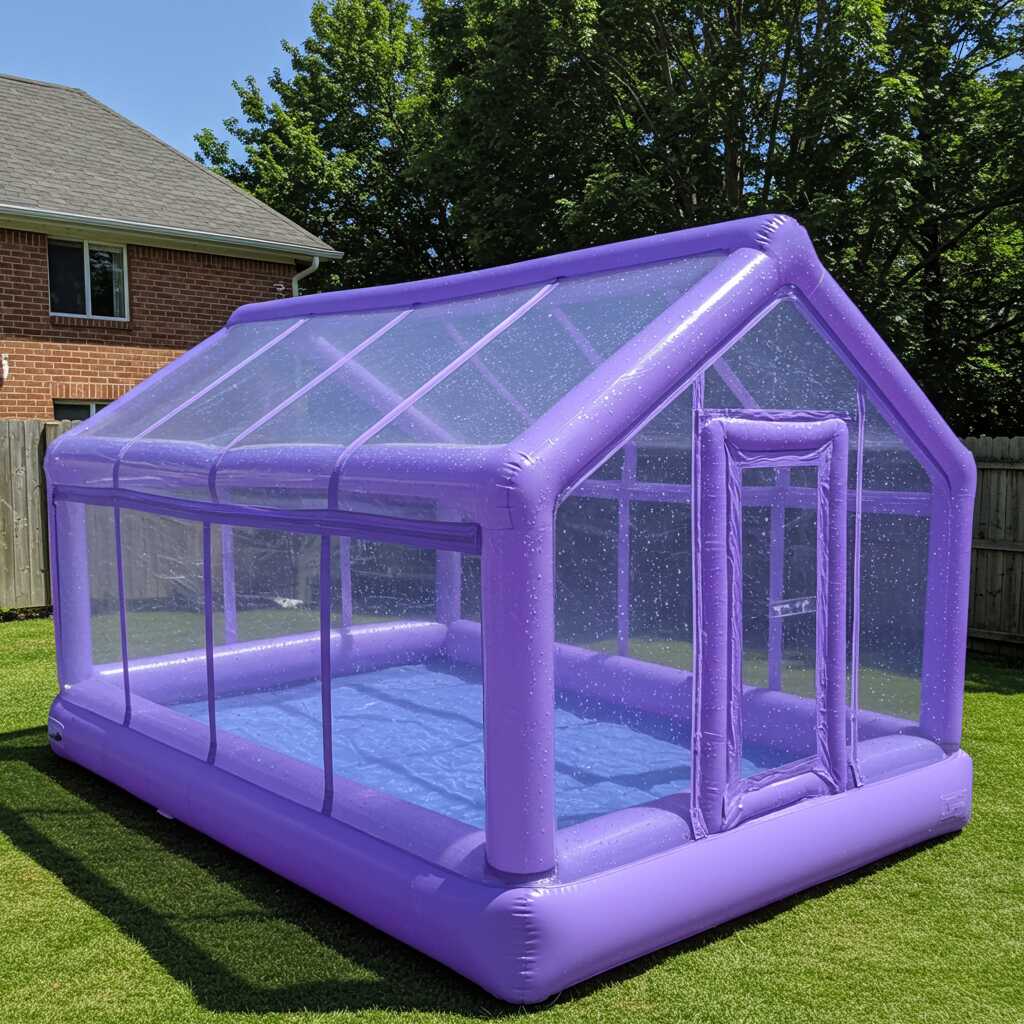
On the leisure side, the pool component is engineered for comfort and enjoyment. The interior is designed with ergonomics in mind, featuring smooth surfaces and customizable layouts to accommodate different preferences. Some models include built-in seating, adjustable water jets, or even temperature control systems, transforming the pool into a luxurious retreat. The combination of water and the greenhouse effect naturally elevates the ambient temperature, creating a warm, spa-like atmosphere even during cooler months. This feature not only enhances the user experience but also reduces the need for additional heating systems, aligning with eco-friendly practices.
What truly sets inflatable greenhouse pools apart is their seamless integration of these two functions. The shared infrastructure—such as the inflatable frame and climate control mechanisms—ensures that resources are utilized efficiently, minimizing waste and maximizing performance. For instance, the heat generated by the pool water can be harnessed to warm the greenhouse area, while excess moisture from plant transpiration can be redirected to humidify the pool environment. This symbiotic relationship between the two components underscores the ingenuity of the design, making inflatable greenhouse pools a paragon of multifunctional innovation.
Moreover, the adaptability of these structures extends beyond their physical design. Many models come equipped with modular features, allowing users to customize their inflatable greenhouse pools according to specific needs. For example, individuals focused on plant cultivation can opt for enhanced ventilation systems and additional grow lights, while those prioritizing leisure might choose luxury add-ons like sound systems or LED lighting. This level of customization ensures that each inflatable greenhouse pool is uniquely suited to its owner’s lifestyle, whether it serves as a tranquil sanctuary, a productive garden, or a hybrid of both.
In essence, inflatable greenhouse pools exemplify the perfect synergy of modern technology and sustainable living. By combining robust materials, thoughtful engineering, and a commitment to resource efficiency, they redefine what is possible in terms of leisure and functionality. As we continue to explore their applications, it becomes evident that these structures are not merely a product of innovation but a catalyst for reimagining how we interact with our surroundings.
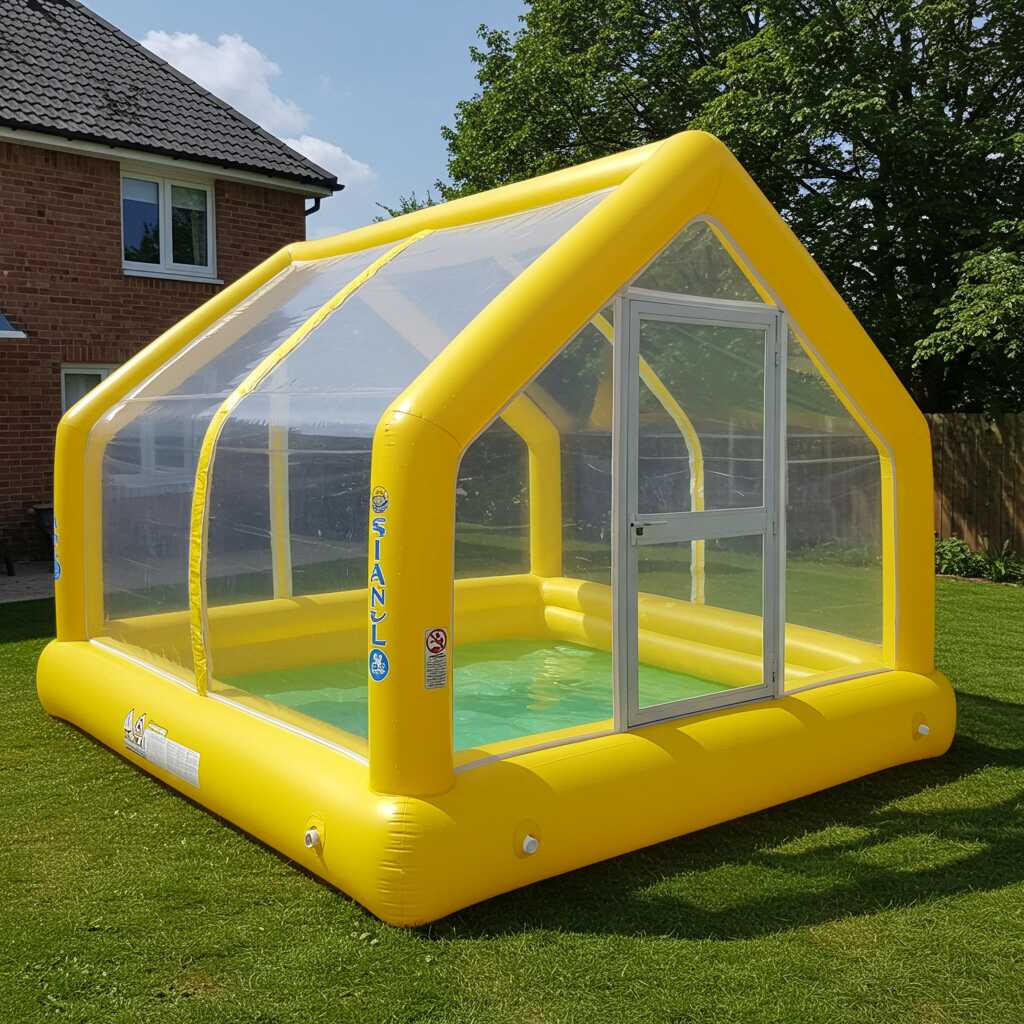
Versatile Applications of Inflatable Greenhouse Pools
The versatility of inflatable greenhouse pools extends far beyond their initial appeal as a recreational and gardening hybrid. These adaptable structures find applications across a diverse array of settings, from residential backyards to commercial enterprises and educational institutions, each benefiting from their unique combination of leisure and functional utility. In residential settings, inflatable greenhouse pools have become a popular choice for homeowners seeking to maximize their outdoor spaces. For families, these pools provide a safe and enjoyable environment for children to swim and play, while the greenhouse component offers parents the chance to cultivate herbs, vegetables, or ornamental plants. This dual functionality transforms a simple backyard into a dynamic hub of activity, fostering both relaxation and productivity. Urban dwellers, in particular, benefit from the compact design of these pools, which can be installed on rooftops, balconies, or small patios, effectively addressing the challenge of limited space in metropolitan areas.
Beyond personal use, inflatable greenhouse pools are gaining traction in commercial settings, where their adaptability proves invaluable. Resorts and wellness centers have begun incorporating these structures into their offerings, providing guests with a unique blend of aquatic therapy and botanical experiences. Imagine lounging in a warm pool surrounded by lush greenery, with the scent of blooming flowers enhancing the ambiance—a scenario made possible by inflatable greenhouse pools. Similarly, spas and retreats are leveraging the pools’ ability to create serene, immersive environments that promote relaxation and rejuvenation. The greenhouse feature allows businesses to maintain vibrant indoor gardens year-round, adding aesthetic value and improving air quality for patrons. Furthermore, the modular nature of these pools enables businesses to tailor their designs to match branding or seasonal themes, ensuring a fresh and engaging experience for repeat visitors.
Educational institutions are another key beneficiary of inflatable greenhouse pools, as they offer hands-on learning opportunities in fields such as biology, environmental science, and agriculture. Schools and universities can use these structures as interactive teaching tools, allowing students to study plant growth cycles, water conservation techniques, and sustainable practices firsthand. For example, a school might integrate the greenhouse pool into its curriculum by assigning students to manage a small aquaponics system, combining lessons on aquatic ecosystems with plant cultivation. This experiential approach not only deepens students’ understanding of theoretical concepts but also instills a sense of responsibility toward environmental stewardship. Community centers and public parks can similarly adopt inflatable greenhouse pools to host workshops, gardening clubs, or recreational programs, fostering social engagement and skill development among participants.
The adaptability of inflatable greenhouse pools also makes them suitable for specialized applications in agriculture and research. Farmers and horticulturists can utilize these structures as experimental stations for testing new crop varieties or optimizing growing conditions. The controlled environment provided by the greenhouse ensures consistent results, while the pool’s water reservoir can be repurposed for irrigation or aquaculture projects. Researchers, on the other hand, may employ inflatable greenhouse pools to study the interplay between aquatic and terrestrial ecosystems, gathering valuable data on biodiversity and resource management. Even in disaster relief scenarios, these pools could serve as temporary shelters equipped with food-growing capabilities, offering both sustenance and comfort to affected populations.
Ultimately, the widespread applicability of inflatable greenhouse pools underscores their transformative potential. Whether enhancing a family’s backyard, elevating a business’s guest experience, enriching educational initiatives, or supporting agricultural innovation, these structures demonstrate an unparalleled ability to meet diverse needs. By seamlessly integrating leisure and functionality, they not only address contemporary challenges but also inspire creative solutions for the future.
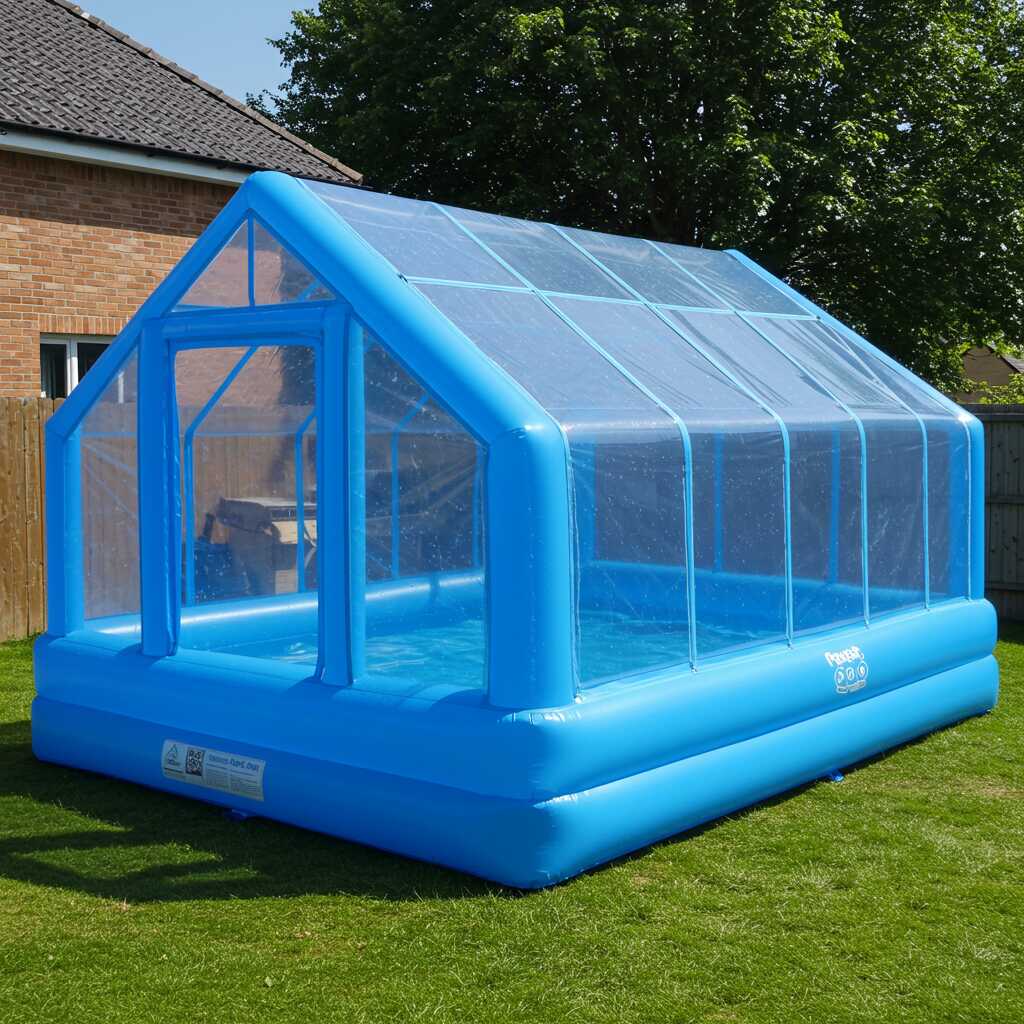
Environmental Benefits of Inflatable Greenhouse Pools
One of the most compelling aspects of inflatable greenhouse pools is their significant contribution to environmental sustainability, achieved through innovative design features that minimize resource consumption and maximize ecological benefits. At the forefront of these advantages is their energy efficiency. Traditional pools often require substantial energy inputs to maintain water temperature and filtration systems, while conventional greenhouses rely heavily on artificial heating and cooling to sustain optimal growing conditions. In contrast, inflatable greenhouse pools leverage their integrated design to reduce energy demands substantially. The enclosed structure traps heat generated by sunlight and the pool’s water, creating a self-sustaining microclimate that requires minimal external intervention. This natural thermal regulation not only lowers electricity usage but also decreases reliance on fossil fuels, aligning with global efforts to combat climate change.
Water conservation represents another critical environmental benefit of these structures. Traditional gardening and pool maintenance are notorious for their high water consumption, a concern exacerbated by increasing water scarcity in many regions. Inflatable greenhouse pools address this issue through their closed-loop system, which recycles water between the pool and the greenhouse. Excess moisture from plant transpiration can be captured and redirected to humidify the pool environment, while water from the pool can be filtered and reused for irrigation. This symbiotic relationship ensures that every drop of water is utilized efficiently, significantly reducing waste compared to standalone systems. Additionally, the controlled environment of the greenhouse minimizes evaporation, further conserving this precious resource.
The materials used in inflatable greenhouse pools also play a vital role in their eco-friendly profile. Unlike permanent structures that often involve resource-intensive construction processes, these pools are crafted from lightweight, recyclable materials such as PVC and TPU. Their inflatable design eliminates the need for heavy machinery or extensive labor during installation, reducing the carbon footprint associated with manufacturing and assembly. Moreover, the portability of these structures allows users to dismantle and relocate them with ease, preventing land degradation and preserving natural landscapes. For urban environments, where space is at a premium, the compact and modular nature of inflatable greenhouse pools ensures they occupy minimal ground area, leaving room for other sustainable initiatives.
Another noteworthy environmental advantage is their ability to support biodiversity and local ecosystems. By creating a controlled yet interconnected habitat, these pools encourage the coexistence of aquatic and terrestrial life. For instance, the greenhouse area can house pollinators such as bees and butterflies, which are essential for plant reproduction, while the pool itself can serve as a sanctuary for aquatic organisms. This integration fosters a balanced ecosystem that promotes resilience against environmental stressors. Furthermore, the inclusion of edible plants in the greenhouse contributes to localized food production, reducing the carbon emissions associated with transporting produce over long distances.
Perhaps most importantly, inflatable greenhouse pools inspire a shift in consumer behavior toward more sustainable practices. Their dual-purpose design encourages users to adopt a holistic approach to resource management, blending leisure activities with environmentally conscious choices. Homeowners, businesses, and educators alike are empowered to engage in practices such as composting, rainwater harvesting, and renewable energy integration, all within the confines of a single structure. This heightened awareness not only benefits individual users but also contributes to broader societal efforts to protect the planet. By merging functionality with sustainability, inflatable greenhouse pools exemplify how innovation can drive meaningful environmental progress.

Conclusion: A Vision for the Future of Leisure and Sustainability
Inflatable greenhouse pools represent a bold leap forward in the evolution of multifunctional living spaces, encapsulating the perfect synergy between leisure and sustainability. By seamlessly integrating the soothing allure of swimming pools with the practicality of greenhouse cultivation, these structures offer a transformative solution for modern living. They embody a philosophy that transcends mere convenience, championing a lifestyle that prioritizes both personal well-being and environmental stewardship. As we’ve explored throughout this article, their innovative design, versatile applications, and eco-friendly attributes make them a standout choice for homeowners, businesses, and communities alike. From urban rooftops to sprawling rural properties, inflatable greenhouse pools adapt effortlessly to diverse environments, proving that sustainability and enjoyment can coexist harmoniously.
Looking ahead, the potential for inflatable greenhouse pools to shape the future of leisure and sustainable living is immense. As awareness of environmental issues continues to grow, so too does the demand for solutions that align with eco-conscious values. These pools are poised to meet this demand by offering a tangible way to reduce resource consumption, conserve water, and promote biodiversity—all while enhancing the quality of life for their users. Their modular and customizable nature ensures that they can evolve alongside technological advancements, incorporating features such as solar-powered heating, smart climate control systems, or AI-driven plant monitoring. Such innovations will further cement their role as a cornerstone of sustainable design, inspiring new generations to embrace a lifestyle that respects and nurtures the planet.
Ultimately, inflatable greenhouse pools are more than just a product—they are a symbol of hope and possibility. They remind us that creativity and ingenuity can bridge the gap between human needs and ecological balance, paving the way for a future where leisure and functionality go hand in hand. As more individuals and organizations adopt these remarkable structures, they contribute to a collective movement toward a greener, more harmonious world. Inflatable greenhouse pools are not merely a trend; they are a testament to the power of innovation to create lasting change.

